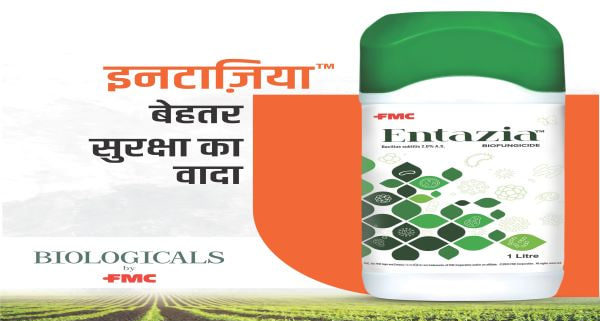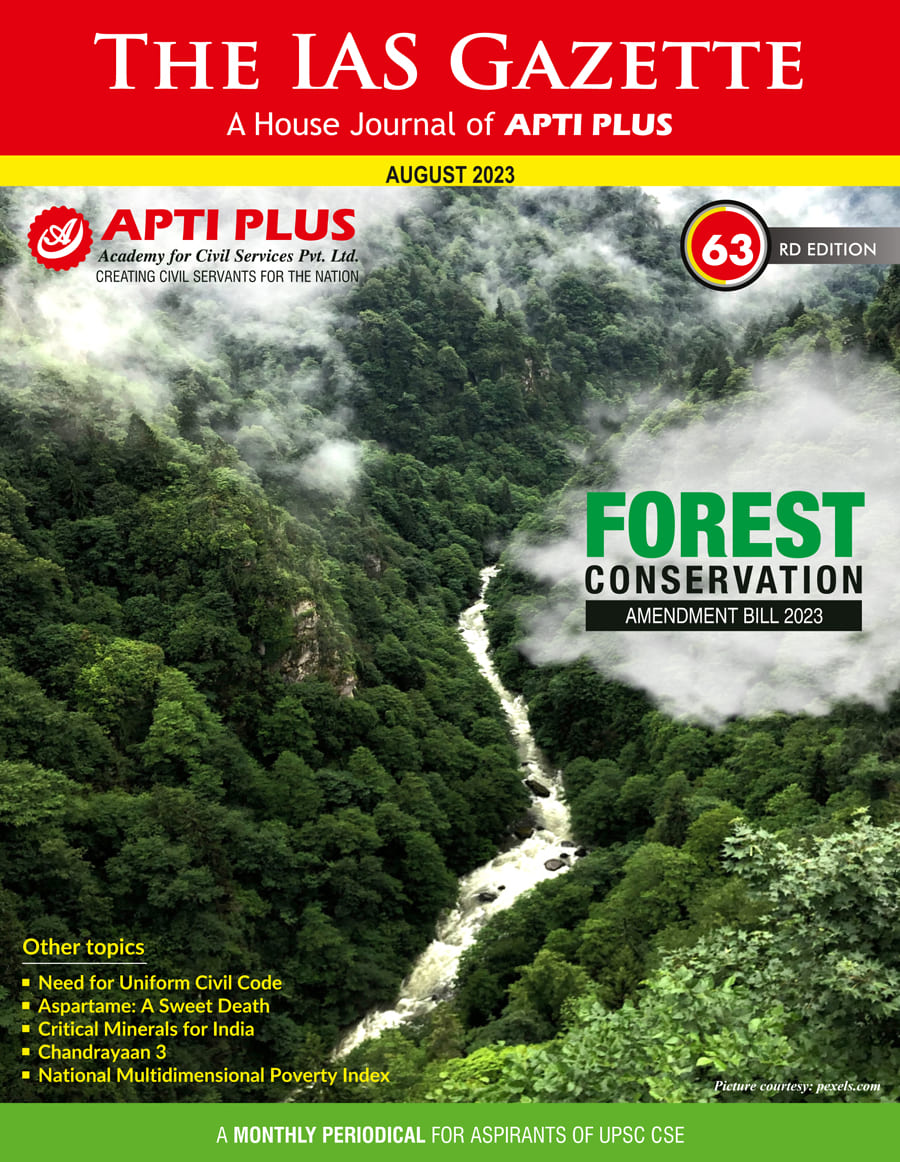Description

Copyright infringement not intended
Picture Courtesy: www.indianchemicalnews.com
Context: FMC India unveiled ENTAZIA biofungicide, its newest product in the market. ENTAZIA biofungicide is an innovative biological crop protection product that contains Bacillus Subtilis, a beneficial bacterium that can suppress fungal pathogens.
ENTAZIA
About
- ENTAZIA is a biofungicide crop protection product developed by FMC India. It is specifically formulated with Bacillus subtilis, a naturally occurring bacterium, as its active ingredient. The product is designed to offer farmers an effective and sustainable solution for safeguarding their crops against fungal diseases while ensuring environmental integrity.
- ENTAZIA is categorized as a biofungicide, which means it is derived from natural sources and relies on living organisms or their byproducts to control plant diseases. In this case, Bacillus subtilis is utilized for its known capabilities in combating plant pathogens.
- FMC India is the entity responsible for the development of ENTAZIA. FMC is a global agricultural sciences company with a focus on delivering innovative and sustainable solutions to the agricultural sector. The development of ENTAZIA underscores FMC's commitment to providing farmers with effective and eco-friendly crop protection options.
|
Biofungicide
- It is a type of biological pesticide that is used to control fungal diseases in plants. Unlike chemical fungicides, which are synthetic compounds, biofungicides are formulated with living organisms or their byproducts. These natural agents help prevent, inhibit the growth of, or suppress fungal pathogens that can damage crops, trees, and other plants.
- Examples of microorganisms commonly used in biofungicides include Bacillus spp. (bacteria), Trichoderma spp. (fungi), and mycoviruses (viruses that infect fungi). These organisms have been found to effectively combat a range of fungal pathogens, providing sustainable solutions for disease management in agriculture and horticulture.
Key characteristics and components of biofungicides:
- Biofungicides often contain beneficial microorganisms such as bacteria, fungi, or viruses that have antagonistic effects on plant pathogens. These microorganisms may either directly attack the pathogen or stimulate the plant's natural defence mechanisms.
- They work through various modes of action. Some directly parasitize or compete with the fungal pathogens for resources, while others produce compounds that inhibit the growth of the pathogens.
- They are considered environmentally friendly because they are derived from natural sources and generally have minimal impact on non-target organisms, beneficial insects, and the overall ecosystem.
- They are often safer for humans and the environment compared to chemical fungicides, as they do not leave behind harmful residues.
- They can be used as part of an integrated pest management (IPM) strategy to reduce the risk of developing resistance to fungal pathogens.
- They can be used on a variety of crops, including fruits, vegetables, ornamental plants, and crops.
- In some cases, biofungicides are used in combination with chemical fungicides to improve disease control and reduce the amount of synthetic chemicals required.
The use of biofungicides aligns with the broader goals of sustainable agriculture and reducing the environmental impact of conventional farming practices. It offers an alternative approach to disease control while minimizing the potential negative consequences associated with the use of chemical fungicides.
|
Advantages of ENTAZIA
Control of Bacterial Leaf Blight
- ENTAZIA harnesses the natural capabilities of Bacillus subtilis to effectively control bacterial leaf blight. Bacterial leaf blight is a serious and common disease that adversely affects rice crops, often leading to significant yield losses in rice cultivation.
- Leaf Blight is a generic term used to describe a plant disease that primarily affects the foliage, or leaves, of various plants. It is characterized by a range of symptoms, including leaf discolouration, wilting, and, in severe cases, the death of the affected leaves.
- It can be caused by various types of pathogens, including fungi or bacteria. These pathogens infect and damage plant tissues, leading to the manifestation of leaf blight symptoms. The specific causative agents responsible for leaf blight can vary depending on the plant species and the prevailing environmental conditions.
- It can affect a wide spectrum of plants, encompassing trees, shrubs, ornamental plants, and crops. The impact and severity of leaf blight can vary greatly depending on the particular plant species and the strain of the pathogen involved. In the context of the discussion about ENTAZIA, bacterial leaf blight in rice is of particular concern, given its potential to cause substantial reductions in rice yields and economic losses for farmers.
Activation of Crop's Defense System
- One of the key benefits of ENTAZIA is its ability to activate the innate defence mechanisms of the treated crops against plant pathogens. By doing so, it not only serves as a preventive measure but also acts as a control measure against bacterial leaf blight. Importantly, it achieves these objectives without causing harm to natural predators and parasites, which are integral to maintaining a balanced and sustainable ecosystem.
Promotion of Natural Pest Defense
- ENTAZIA fosters the natural pest defence mechanisms within the treated plants. This is achieved by utilizing the naturally occurring Bacillus subtilis to establish a robust line of defense against bacterial leaf blight, thereby contributing to sustainable and environmentally friendly pest management practices.
Enhancement of Plant Microbiome
- The application of ENTAZIA promotes a healthy plant microbiome. The plant microbiome refers to the community of microorganisms that interact with plants. A robust and balanced microbiome enhances the resilience of plants to various stress factors and contributes to overall plant growth and vigour.
Integration with Pest Management
- ENTAZIA is designed to be compatible with integrated pest management (IPM) programs. It can be integrated seamlessly into such programs alongside FMC's bio-stimulants and synthetic fungicides. This integrated approach provides additional benefits to plants by addressing multiple facets of crop protection and growth.

Summary
- ENTAZIA is a biofungicide developed by FMC India, featuring Bacillus subtilis as its active ingredient. It is tailored to provide effective protection against bacterial leaf blight and other fungal diseases in crops while promoting plant health and environmental sustainability. Leaf blight, which encompasses various diseases caused by pathogens, poses a common and significant threat to a diverse array of plant species, including rice in the case of bacterial leaf blight.
|
PRACTICE QUESTION
Q. The term “ENTAZIA” was frequently seen in the news, it is related with:
A) Malware
B) Ancient Tamil Script
C) Biofungicide
D) Programming language
Answer: C
|
https://krishijagran.com/product-launches/fmc-introduces-entazia-biofungicide-to-safeguard-crops-in-india/
















